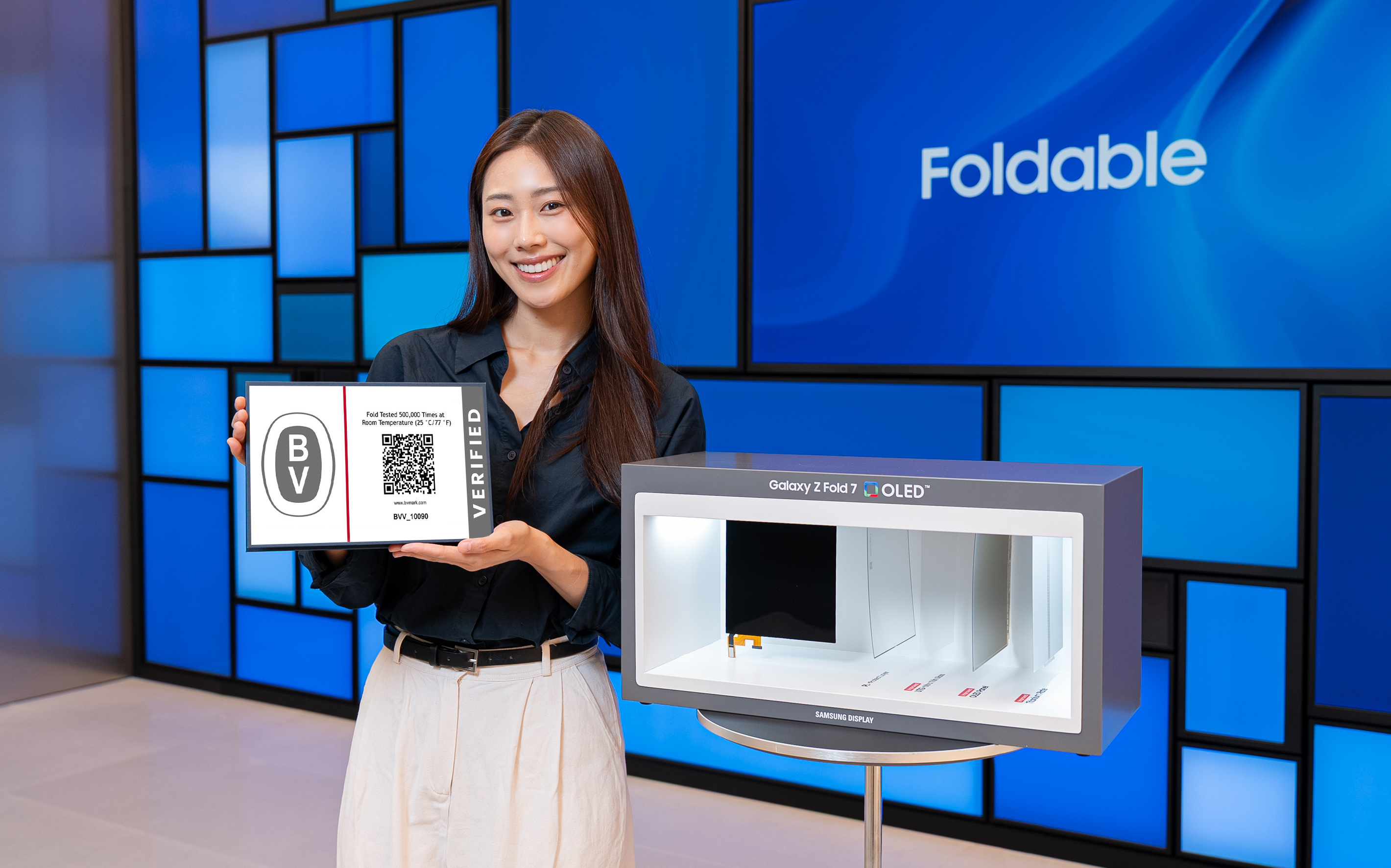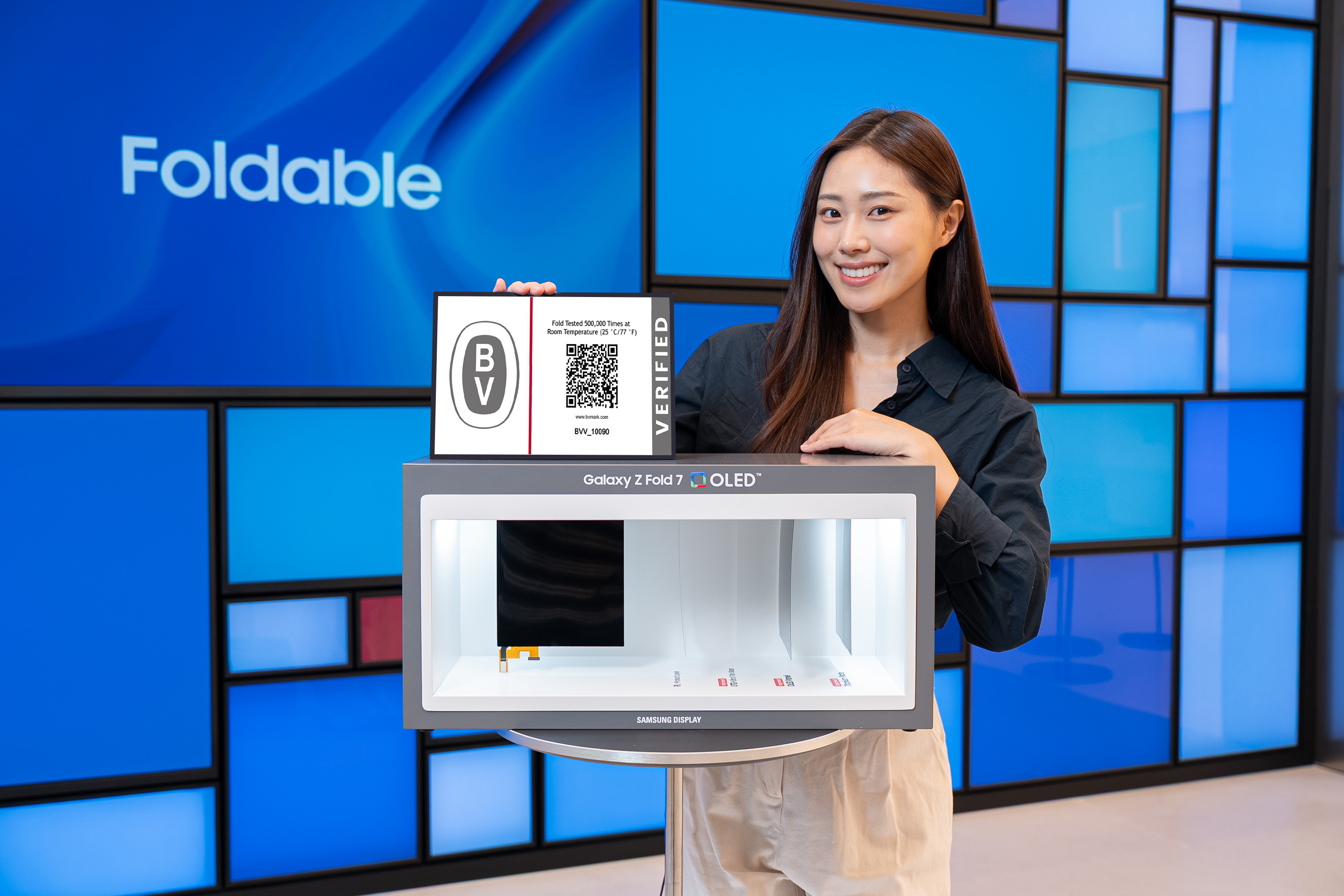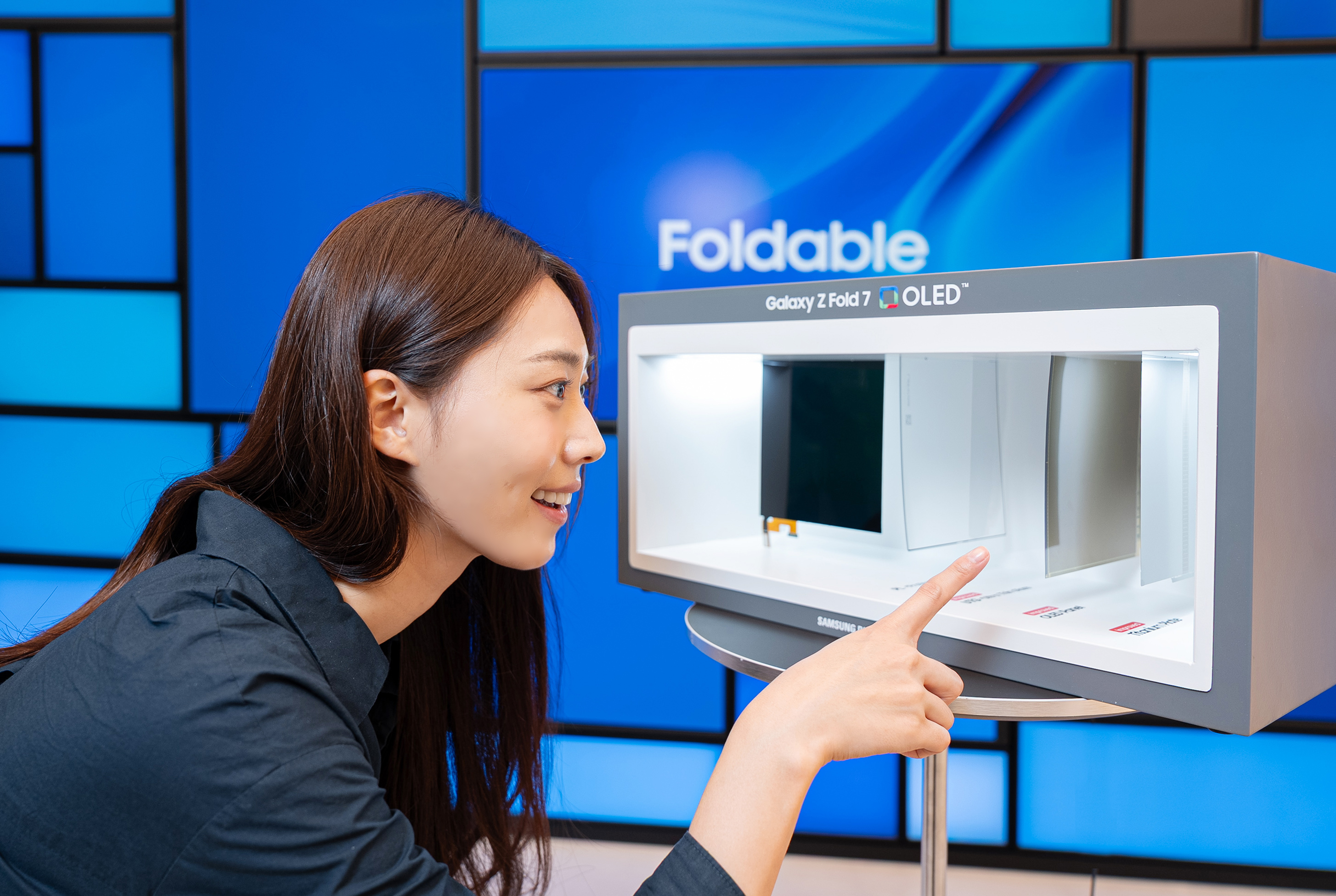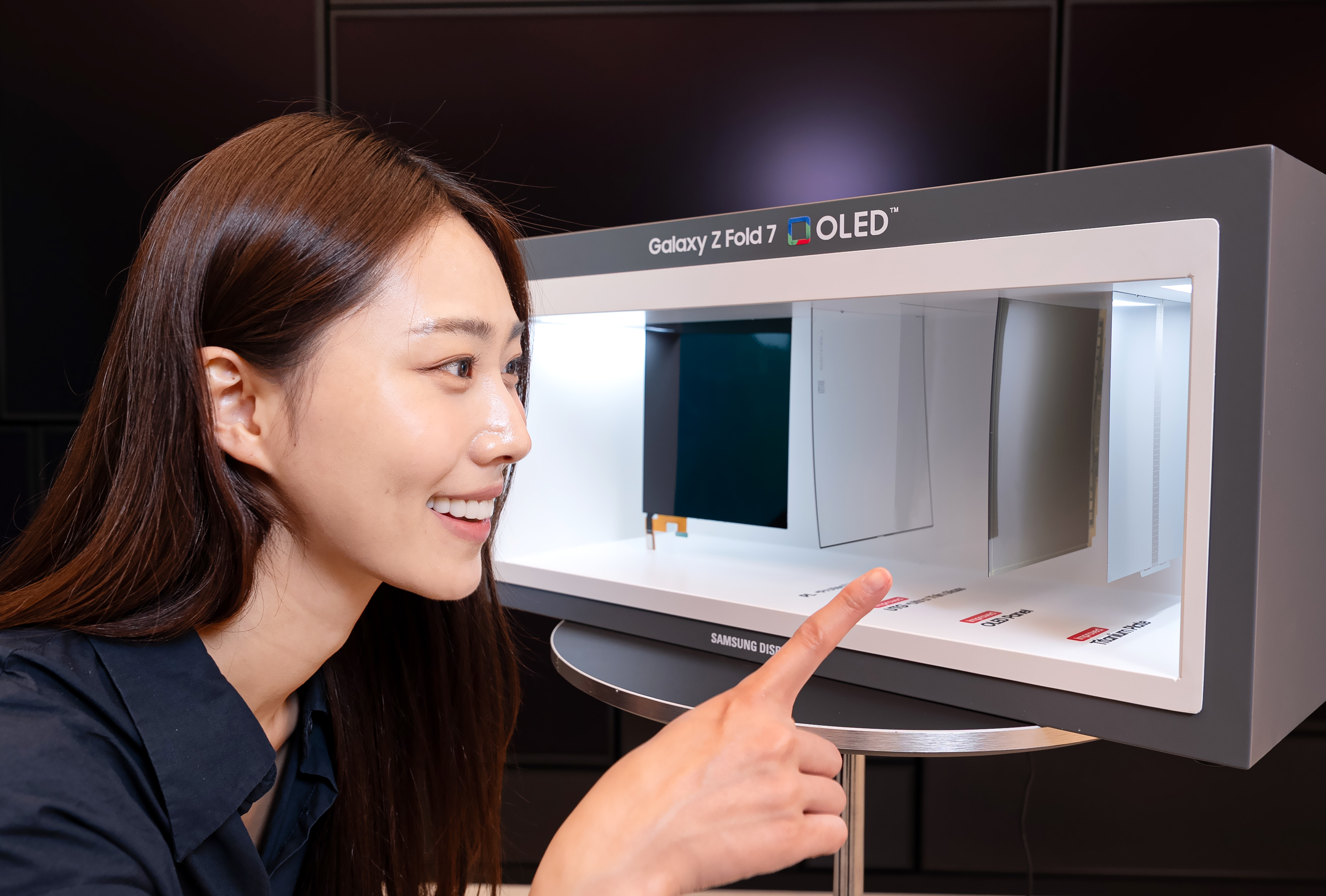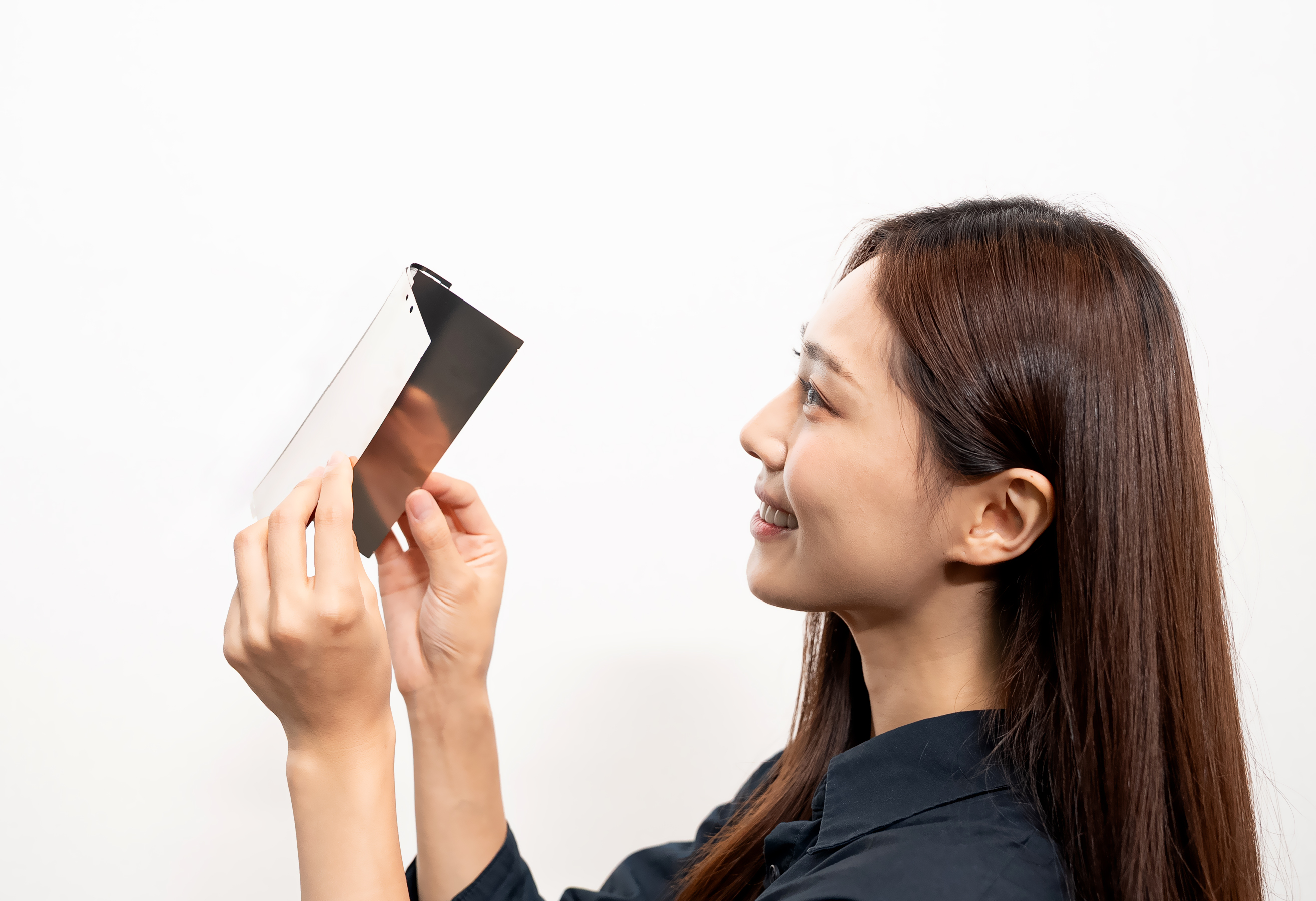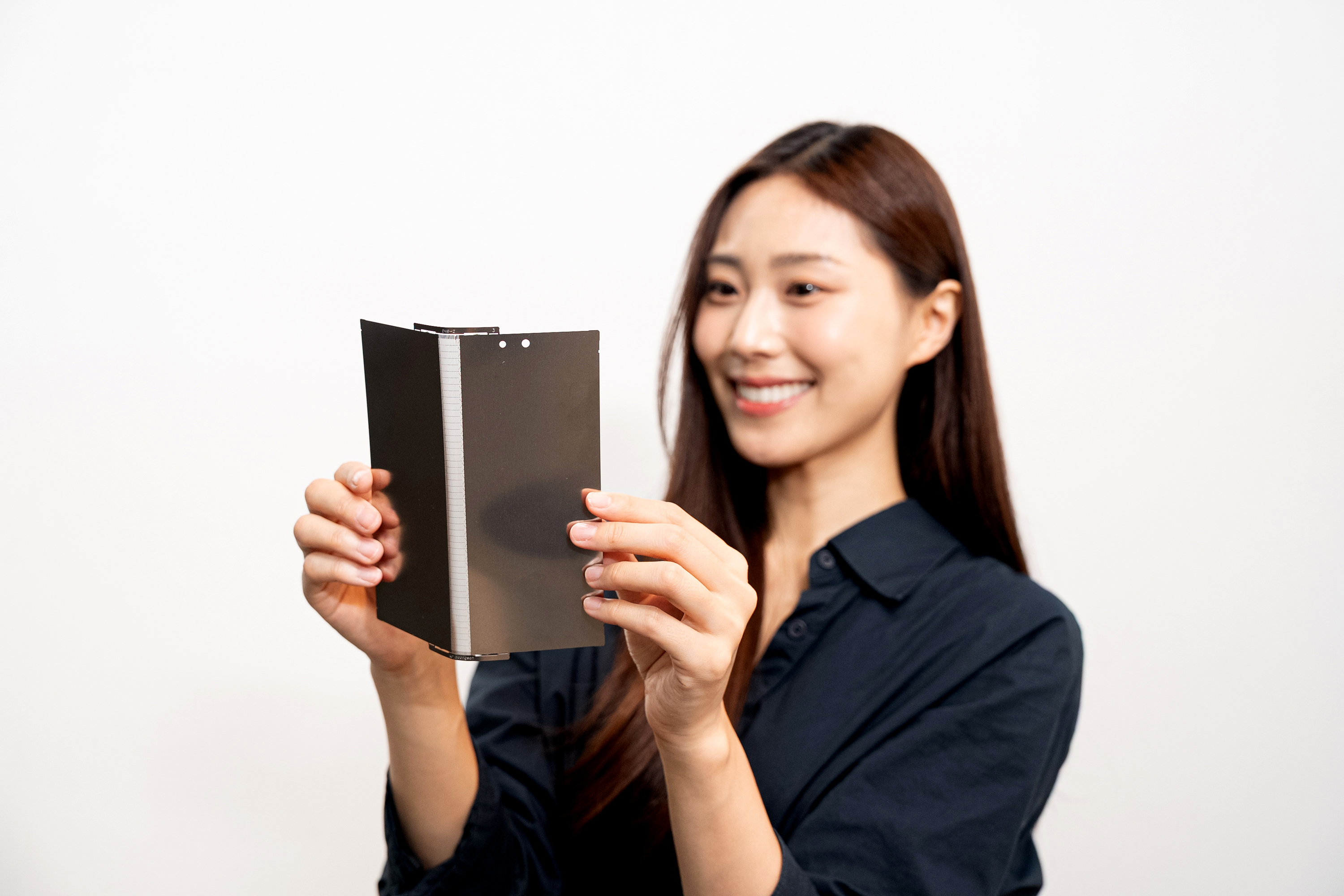• Proven to last over 10 years for average users, and over 6 years for heavy users who fold their devices more than 200 times a day without durability concerns
• Developed and applied an innovative panel structure that absorbs and disperses external impact to enhance shock resistance
• Advancement in shock resistance further widens Samsung Display’s technological lead in the foldable OLED display market
SEOUL, July 22, 2025 - Samsung Display announced today that its latest foldable OLED panel remained fully functional after a 500,000-fold durability test, once again proving the exceptional durability of its foldable OLED technology.
The panel was tested and verified by the global testing, inspection, and certification company Bureau Veritas. Samsung Display raised its internal durability testing standard from 200,000 to 500,000 folds, which is 2.5 times its previous benchmark, underscoring its confidence in the panel’s long-term resilience. The panel is used in the recently launched Samsung Galaxy Z Fold7.
According to Bureau Veritas, the test was conducted over 13 days at 25°C (77°F), and the panel remained fully functional after 500,000 folds. A total of 500,000 folds translates to over 10 years of use for average users folding their device about 100 times a day, and over 6 years for heavy users folding more than 200 times daily, proving that durability is no longer a limiting factor in the lifespan of foldable smartphones.
This remarkable durability is made possible by Samsung Display’s newly developed shock-resistant structure, inspired by the design principles of bulletproof glass.
Traditional bulletproof glass consists of multiple layers of strengthened glass and plastic films engineered to absorb and disperse energy on impact. When a bullet strikes the surface, the elasticity of the outer glass layer takes in much of the impact energy, preventing penetration. Samsung Display applied this concept by increasing the thickness of its outermost UTG (Ultra Thin Glass) by 50% and introducing a new high-elastic adhesive applied to each layer inside its OLED panel, offering over four times the recovery performance compared to the previous material. These enhancements significantly improve the panel’s ability to absorb external impact.
In addition, a new flattening structure was incorporated to distribute shock evenly across the panel, and a titanium plate was adopted to support the display. The titanium plate offers high strength while being lighter and thinner than conventional materials—resulting in a slimmer form factor with greater protection.
"As foldable OLED enters its seventh year of commercialization, we’ve achieved another meaningful breakthrough in both durability and design,” said Hojung Lee, Executive Vice President and Head of Mobile Display Product Planning Team at Samsung Display. "This new panel not only builds consumer confidence in foldable OLED durability but also underscores the technological advantage that makes Samsung Display distinguished in the industry.”
